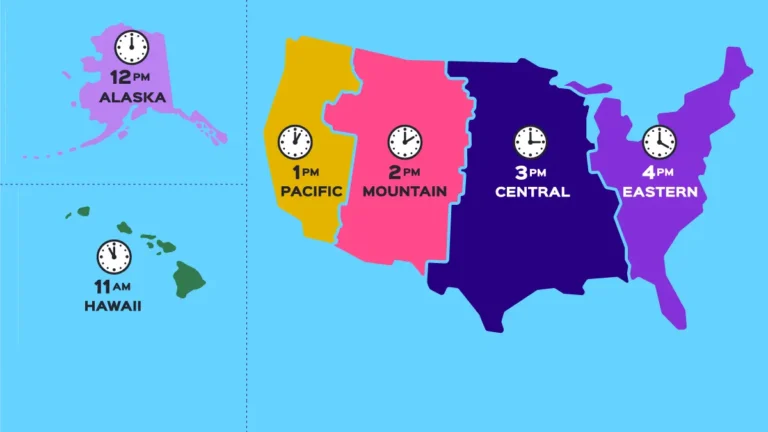HR communications are often overlooked when compared to marketing messages and ad campaigns. Misdirected marketing loses your customers. Poor internal communications lead to disengaged employees and higher turnover.
Is the lack of an effective communication framework hurting your organization? Replacing an employee costs an average of nearly $4,700. The average cost for executive-level hires is over six times higher.
You can engage your team with better internal communication. In this guide, we’ll explain how to build an engaging HR communication strategy that retains talent.
What is an engaging HR communication strategy?
An HR communication strategy is how you manage internal messaging and information sharing. An engaging HR communication strategy is a deliberate framework to encourage two-way communication. Employee-driven insights help drive improvement and better align processes with business goals.
Recruitment and new employee onboarding form one arm of human resources. HR’s job with a candidate doesn’t end with the hiring process. It must also ensure new and current employees are set up to perform their jobs. HR departments accomplish this by creating standards for internal communication.
The 4 types of organizational communication
There are four types of internal communication that HR is concerned with:
- Upward communication: Communication from lower-level team members to managers and leadership. This is no longer an afterthought and is a potential insight goldmine. Suggestion boxes, employee feedback surveys, and other tools help you stay on top of employee morale and engagement levels.
- Downward communication: The typical way HR professionals and managers disseminate information to employees. Email newsletters and intranet boards are common methods of top-down communication.
- Diagonal communication: When a team member reaches out across departments and seniority levels. This type of communication breaks down silos and builds a more collaborative culture.
- Horizontal communication: Typical interactions between employees at the same level, usually between departments.
Why is an HR comms strategy important for employee retention?
Forbes found that poor communication negatively affects how much workers trust their employers. Fifty-four percent of remote team members lose trust in leadership due to poor communication.
When trust evaporates, employees switch off and are likely to bounce at the first opportunity.
Businesses build an engaging HR communication strategy for the following reasons:
- An HR communication framework: Establish consistent standards for communication for greater transparency.
- Greater clarity and understanding: Ensures employees know company goals and expectations.
- Increased employee engagement: It’s easy for employees to become disengaged at work. An internal communication strategy helps employees feel heard and better engaged.
- Higher productivity: Employees who feel included are almost five times more likely to report increased productivity.
- Attract and retain top talent: Many employees now work from a hybrid model. Effective HR communication uses digital tools that empower and include remote team members.
- Build more trust: A communication strategy enables you to maintain better guidance and improve employee relationships.
- Create a positive company culture: Communication standards show the team what the organization is all about. HR and management can foster an open and helpful environment.
- Employee recognition: Employees who feel valued and appreciated are more likely to stick with their jobs. Everyone wants to get some form of recognition in exchange for the time and hard work that they put into their job. HR comms enable managers and leadership to give employees their dues.
- Implementing effective retention strategies: Incorporating retention strategies into your HR communication plan is crucial. By actively engaging employees and addressing their needs through communication, you can significantly contribute to enhancing retention rates and creating a more stable and committed workforce.
How to build an HR communications strategy that boosts employee retention
You can start a virtual call center to serve your target customers better. What about better serving your employees?
A 2023 Gallup survey found that 18% of employees are actively engaged. That means that four out of five employees check out and are likely on autopilot.
Follow these steps to build engagement with an effective HR comms strategy.
1. Assess your current HR communications
You can’t reach the top of the mountain if you don’t know where you’re starting the climb. Collaborate with HR managers to assess the current state of your internal communications.
What does each stakeholder enjoy or find useful? What channels or procedures are redundant and ineffective? Use employee self-evaluations to grasp how your team perceives its current performance.
A communications assessment includes evaluating your current communication tools or lack thereof.
2. Segment your team
How does your marketing team better reach its audience? Customer segmentation. Likewise, you’ll be able to communicate effectively by segmenting your employees. Team segmentation helps you gain a better understanding of different roles and departments.
You can divide employees by level, seniority, departments, or whatever you see fit. Use employee segmentation to keep tools and messaging relevant and build value.
3. Choose a value proposition
You can guide goal-setting by creating a value proposition. Deliver value to your team through performance, convenience, flexibility, or customization.
Each of these areas can affect employee retention. Your value proposition will depend on several factors, including your current circumstances.
4. Define your communication objectives
Now you have a better understanding of the needs of your team and your current setup. It’s time to define the goals of your communication strategy. What benefits or improvements are you hoping to achieve with better HR communications?
For example, you’re reading this article because you want to improve employee retention. So retention is priority number one. You want to increase engagement and foster a collaborative company culture.
5. Pick the right HR communication channels and activities
HR communication can take place on a wide variety of channels. Carve out which options are best for you.
Some communication methods include:
- Team messaging
- Surveys
- Video meetings
- Conference calls
- Intranet portals
- Company events and gatherings
- Town hall meetings
- Mobile apps
- Webinars
- Employee hotlines
- Social media
- Workshops
- Project management tools
- Company newsletters and blogs
You don’t need to use everything on the list. Pick a combination that appeals to your employee segments and also aligns with your business goals.
6. Employ the right communication tools
Choose the right tools to get the job done. If you want flexible team messaging, look to apps such as Slack or Microsoft Teams. For wide dissemination, you can use a CMS like WordPress to maintain a company blog.
A unified communications solution provides your team with seamless omnichannel communications. These platforms are equipped to handle anything from video conferences to team messaging.
You can also use an intranet portal to maintain company news and change management. Contact center industry trends aren’t aiming at internal comms. However, you can use a solution to host HR and employee hotlines.
7. Centralize HR documentation
Gone are the days of disorganized paper files. You can centralize your HR documentation with HR software. HR software lets you manage paperless files and documents, like your employee handbook and health insurance plan information, online and in one place.
Look for payroll software with a free employee portal that integrates with HR software so you can give secure employees access to relevant documents.
8. Promote two-way communication and feedback.
Use two-way communication to better engage with your team. Employees want to know how they’re doing. Gallup found that 26% of employees strongly agree that manager feedback helps them perform better. Downhill criticism is a double-edged sword, though. The same study found that negative feedback from a manager drives nearly 80% of employees to look for an exit.
Alleviate one-sided communication by providing your team with employee feedback surveys. These can inform HR about employee engagement and satisfaction. Survey forms also give employees a chance to provide performance reviews for their boss or line manager.
9. Use relevant communication metrics
You can’t implement a new communications plan without having any measurables. What are your HR communication value drivers?
Some HR and recruiter metrics to monitor include:
- Employee engagement
- Employee productivity
- Average employee retention
- Employee turnover rates
- Open rates
- Adoption rates
- Page visits
- Portal and website logins
- Employee satisfaction or net promoter score
Pick a set of KPIs that reflect how you hope to improve employee engagement and retention.
10. Train management
HR should prioritize training management and leadership on your internal communication strategy. Use webinars and demonstrations to ensure everyone at the top adopts your new tools. Every team member should be able to turn to their manager if they have any questions.
11. Measure, evaluate, and improve
Use an HR management platform or other tools to collect and analyze the data. Look for increases in employee engagement, productivity, and satisfaction. Of course, the number one target is your retention rates.
Encourage upward feedback to find out what isn’t working with your new strategy. Take criticism on board and adjust your approach as needed.
Tips for effective HR communication
Follow these best practices to get the most out of your HR communication strategy.
- Use anonymous surveys: Protect your employees and foster communication with HR and management.
- Centralize communication: Less is more. Consolidate into one or two tools for simplicity and less confusion.
- Make internal documents accessible: Store documentation in the cloud for easy employee access.
- Don’t forget about social media: Social channels are a great way for you to recognize employees and make company announcements.
- Foster company culture: Ensure your messaging demonstrates your company values. Make sure HR and management constantly promote an open and collaborative environment.
Engage and retain more employees with an HR communications strategy
An engaging HR communication strategy doesn’t happen overnight. You need to put in the work to assess areas of improvement and better understand your audience. With an actionable plan in hand, you can improve how your organization communicates internally.
Your employees will enjoy being more informed, and they’ll have more freedom to ask questions. In turn, they’ll reward you with greater productivity and loyalty. Get going today before you lose another rock star team member!
This is not intended as legal advice; for more information, please click here.
These views are made solely by the author.




